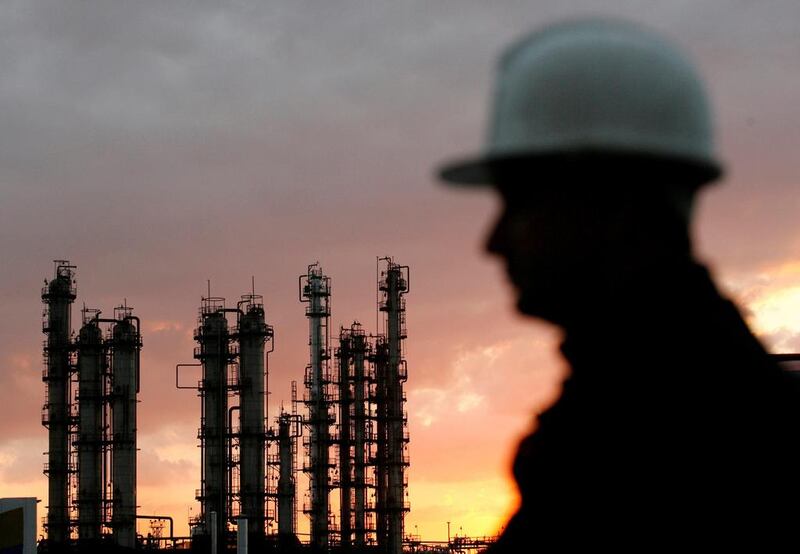Two influential think tanks on Wednesday raised worries about the pace of recovery in the world oil market.
The International Energy Agency, the oil-consuming countries’ main energy watchdog, warned in its monthly oil market report on Wednesday that despite continued signs that the market is more balanced, the huge supply overhang built up over recent years still weighs on oil prices.
"Although market balance is upon us, the existence of very high oil stocks is a threat to the recent stability of oil prices," the IEA report said.
“There are signs that [demand] momentum is easing,” especially in the US and China, while Europe’s surprisingly robust demand “is unlikely to last”, it said.
On the supply side, there has been the predicted fall in output by non-Opec producers – it is on course to fall by 900,000 barrels per day this year. But, the IEA said, the Middle East’s production rose last month to a record 31.5 million bpd and its market share of global oil supplies rose to 35 per cent, the highest since the late 1970s.
Overall production was down by 750,000 bpd from the same month last year, as Opec's big risers – especially Iran, where output has risen by 750,000 bpd since the start of the year as sanctions were eased – has been offset to some extent by decliners such as Venezuela, which is suffering from underinvestment and political turmoil.
Outside of Opec, the United States – where previously rising output was the biggest single factor leading to the glut – continued its decline, and in April (the latest month available) recorded its biggest fall since 2008. The US output of 8.9 million bpd was down by 220,000 bpd on the previous month and 760,000 bpd below last year’s level.
But the US reversals are not expected to last and there is growing evidence that the industry there could bounce back quickly when prices recover further.
“While we expect US crude production to continue falling into 2017, the rate of decline is expected to ease,” the IEA said. “Declines from already-producing legacy wells are diminishing and companies are reporting ever-higher output per rig and better performance of new wells. Signs that activity might start picking up are also emerging.”
In a separate report, Wood Mackenzie, the energy consulting group, said that the US shale oil sector had adapted to low oil prices and that the percentage of projects that would be profitable below US$60-per-barrel oil had increased substantially past year.
“The industry has started to adapt to lower oil prices, cutting costs and getting more projects over the economic threshold [and] future commercial supplies are now increasing again,” WoodMac found, adding that its recent analysis showed that 70 per cent of new drilling in shale oil and conventional oil projects were viable below a price of $60 a barrel for benchmark North Sea Brent crude, compared with 50 per cent of projects a year ago.
“A total of 13 million bpd of new supply could be developed from both tight oil and conventional projects by 2025,” said Patrick Gibson, WoodMac’s head of global oil supply research.
Break-even costs for these developments have fallen by $19 a barrel in the past two years to the current weighted average of $51.
Most of the potential new supply is in the shale-oil sector, whereas most of the conventional oil projects still need significantly higher prices to be profitable.
amcauley@thenational.ae
Follow The National's Business section on Twitter





